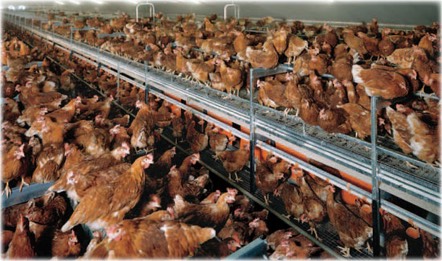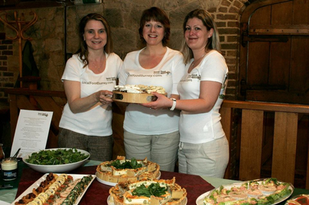Chicken is a staple food for many families, but “cheap” is definitely not “cheerful” when it comes to the lives of millions of intensively-reared hens that make it to our tables each year. Our food editor Tracy Carroll tells us more.

Why “free range” is better than “free meat”
The best things in life are free, or so the saying goes. Well, that might be true of some things, but when I go shopping for chicken, I’m not looking for a bargain.
‘Buy one get one free’ and half price offers on packs of chicken leave me feeling uncomfortable. The meat will almost certainly be from unhappy hens, denied the chance to express natural behaviour such as roaming, scratching, dust-bathing and foraging.
Indeed, methods designed to bring intensively-reared broilers to slaughter weight quickly and cheaply can lead to deformities, as skeletal and organ growth struggles to keep up with rapid weight gain. The birds lack exercise and the final product may not be as “low fat” as many people suppose.
However, the resulting low prices allow retailers to shift birds in vast quantities, creating a seemingly insatiable market for more low-cost poultry. Chicken was such a treat back in 1950 that most people in Britain ate less than a kilo a year. Now, we eat more than two kilos per month.
The term “free range” is intended to reassure consumers that chickens have enjoyed a more natural life. By law, they must have daytime access to the outdoors for at least half their life, with a set amount of space per bird. However, in truth, many “free range” chickens never go outside; they are timid creatures and need encouragement to venture into unknown territory. These chickens are usually slaughtered at around 56 days old, which is an improvement on the typical 37 days for an intensely reared bird.
Organic
And in response to the organic question I say this: as a general rule of thumb, you have more assurances with an organically-reared chicken. The standards are stricter. These slow-growing chickens (which grow at around half the rate of intensively-reared ones, usually being killed at about 12 to 14 weeks) are given continuous access to an outdoor range during the day, sheds where they are housed at night and opportunities for natural behaviour. They are fed a strictly organic diet.
However, as with all meat purchases, the best advice I can offeris to buy from someone who can tell you about provenance. Where it has come from, at what age the animal was slaughtered, what kind of life it had. Don’t assume that a chicken without an “organic” label is inferior to one sporting a “free-range” one. It’s not as simple as that and I will explore this topic in a future article.
Good investment
A slow-grown chicken will set you back around a tenner. Ask for the giblets as these are great for boiling up into a stock and you’ll have the best gravy ever!
A good chicken will provide you with flavoursome meat, minimal fat and what is often described as “an old-fashioned taste.” Buy some sausagemeat stuffing (or, even better, make your own – it’s very easy and you can use up stale bread that may otherwise have ended up in the bin).
You will have plenty of meat for Sunday lunch, plus some left over for sandwiches. And, whatever you do, don’t throw away the carcass until you have made some lovely stock with it. It takes no time at all to pop the bones in a pan, throw in a few peppercorns, a couple of bay leaves, half an onion and a carrot (or whatever you have to hand that will help add subtle flavour – a bendy stick of celery, a few stalks of parsley, a wedge of lemon) then cover with water and bring to a simmer.
Skim off any surface scum, cover loosely with a lid and simmer for at least an hour. Pour into a container through a sieve to remove the vegetables etc and there you have it – a natural stock that has cost you pennies. Use it now in soups, stews and sauces or freeze until you need it.
The best things in life might not be free, but they can indeed give us very good value for money! For me, the reassurance that the main attraction on the dining table has enjoyed a good life doubles its worth. Because the only place I’m happy for chickens to go “cheap” is on the farm.
Learn about the benefits of buying local and what Surrey’s local food scene has to offer with Local FoodSurrey.
Tracy Carroll, Local Food Editor

Tracy Carroll (centre) is a Reigate Mum of one teenage daughter and runs Local Food Surrey, a website all about enabling people to find great food and drink in Surrey. Tracy blogs for us about fantastic local food finds in our area.
